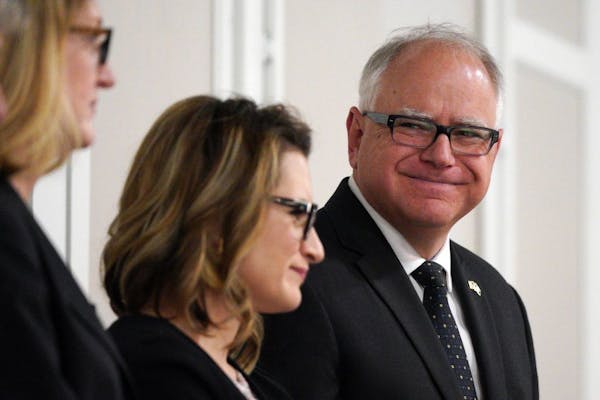Lawmakers are fighting the clock to sort through a complex list of disagreements on an insulin plan to help diabetics before the Minnesota Legislature convenes in three months.
After a deal fell through last spring, activists have been demanding lawmakers go into overtime — by holding a special session — as the cost of the necessary drug has spiked in recent years. For those who can't afford it or don't have insurance, the problem can be life-threatening. Approximately 10.5% of Minnesotans, around 466,638 people, have some type of diabetes, according to the American Diabetes Association.
Democratic Gov. Tim Walz has been asking the DFL-controlled House and Republican-led Senate to sort out their differences. Only then, Walz has said, would he use his power to call a special session before the regular session resumes Feb. 11.
An insulin work group made up of key Democrats, Republicans and the governor's staff has been meeting behind closed doors for the past three weeks. Members of the group say they are answering questions about each other's proposals, which continue to evolve. They remain hopeful about a special session. But to get to a deal, they have to resolve key issues.
Who is eligible?
Senate: Minnesota residents could qualify for aid if they are not enrolled in a public health care program like Medicare or medical assistance and have a family income of 400% of the federal poverty guidelines or less ($103,000 a year for a family of four), said bill sponsor Sen. Eric Pratt, R-Prior Lake.
House: Minnesotans who are uninsured or have high-deductible plans and have a family income of up to 600% of federal poverty guidelines ($154,500 a year for a family of four) could qualify, according to the House bill.
What is the role of drug manufacturers?
Senate: Drugmakers must provide free supplies of the medication to doctors' offices and clinics, based on requests sent to them by health care providers.
House: The manufacturers would pay an annual registration fee that would cover the full cost of the insulin-assistance program.
How would meds be available?
Senate: Diabetics would stop by their doctor's office to submit their request form, which would be reviewed by a doctor and sent to a drug manufacturer. The individual would not necessarily need to meet with a health care provider, Pratt said. The patient would later return to pick up the medication from their provider. Pratt said drug manufacturers told him they would be able to prepare the insulin in two to 10 days.
House: People would fill out an application form with their income and insurance status, and submit it to a participating pharmacy. The pharmacy would give an individual a supply of insulin on the same day, said Rep. Mike Howard, DFL-Richfield, the House bill sponsor. The Department of Human Services would review applications to extend supplies.
How long would the aid last?
Senate: Patients would qualify for up to a 120-day supply from the doctor at a time. But they could continue to renew their supply and get the aid for up to one year.
House: Diabetics would receive an initial 30-day supply. They could apply for another 60-day supply after that. Someone can only participate in the total 90-day program once a year.
Which state agency is involved?
Senate: MNsure staff would handle eligibility paperwork, and let people know if they qualify for the insulin aid. If someone is eligible for medical assistance or MinnesotaCare, MNsure officials would let them know how to enroll in those programs.
House: Department of Human Services (DHS) staff would review application forms. They would also connect people with social service agencies to help them with long-term insulin options. Using money collected from drug manufacturers, DHS would contract with pharmacy benefit managers who would in turn pay pharmacies for the insulin, Howard said.
When would program start?
Senate: A bare-bones version of the program could be operating in 90 days, Pratt said.
House: The program would be implemented by July 2020, or sooner if the DHS commissioner is able to do so, Howard said.
How much does it cost?
Senate: The House and Senate do not yet have specific cost estimates for the programs. But the Senate proposal includes $250,000 in state dollars for a public awareness campaign, and Republicans have previously said their plan would cost pharmaceutical companies millions.
House: The House would have the Department of Human Services commissioner estimate the cost of the plan in the first year. A fee on manufacturers would be calculated to cover the total estimate.
Jessie Van Berkel
Some Nikki Haley voters are hanging on to her candidacy and, like her, refuse to endorse Trump
Biden just signed a bill that could ban TikTok. His campaign plans to stay on the app anyway
Arizona House advances a repeal of the state's near-total abortion ban to the Senate

